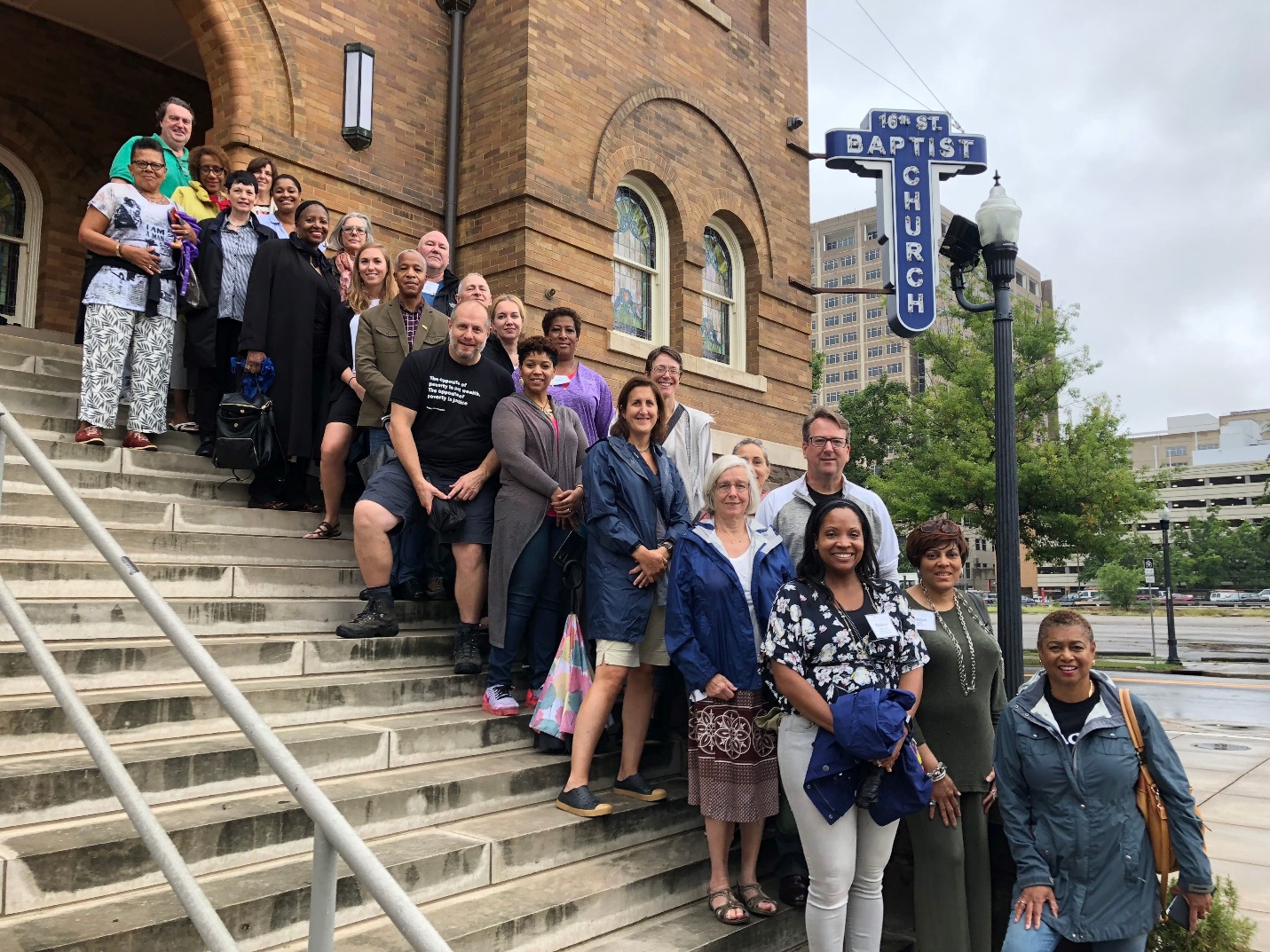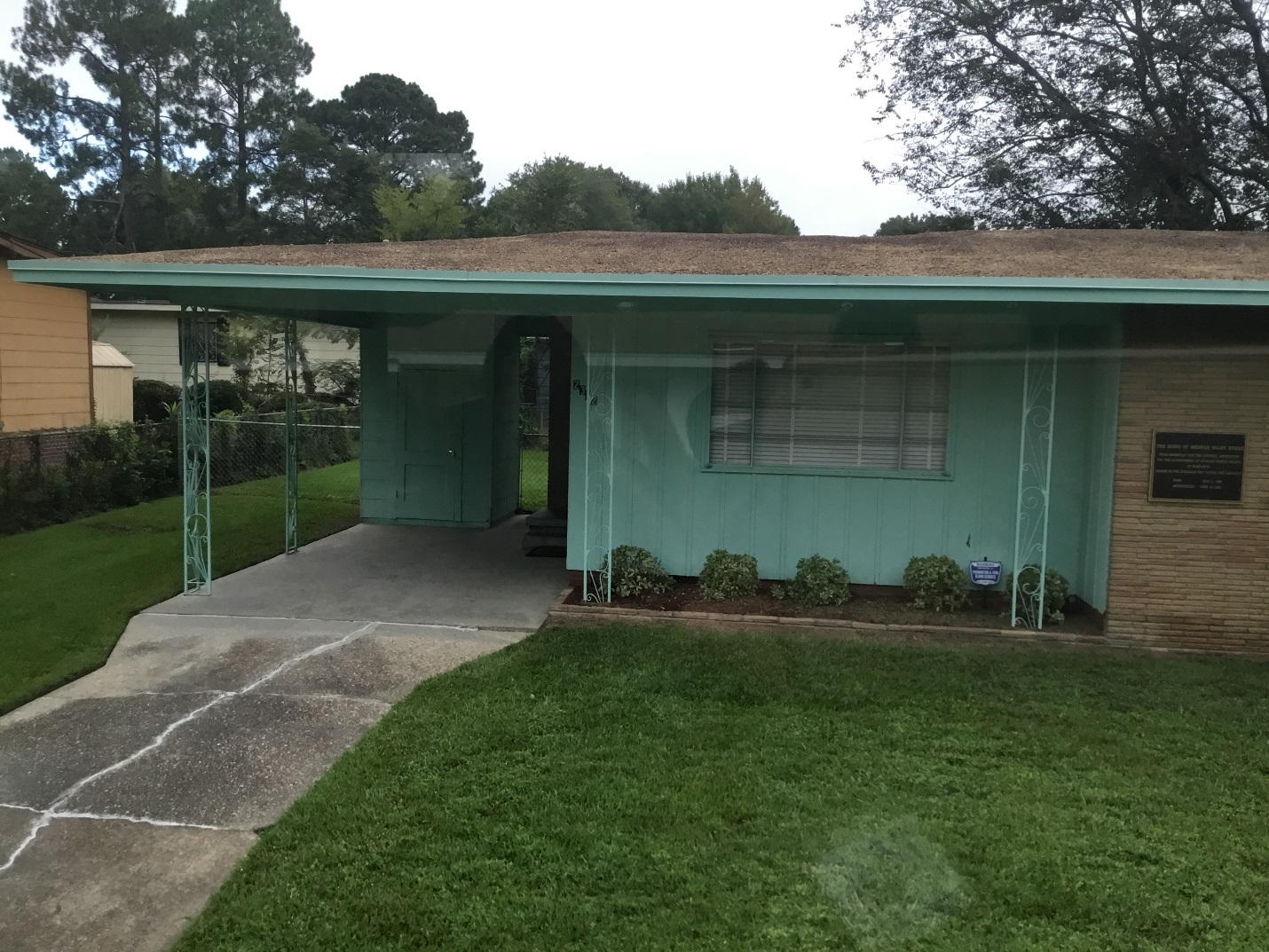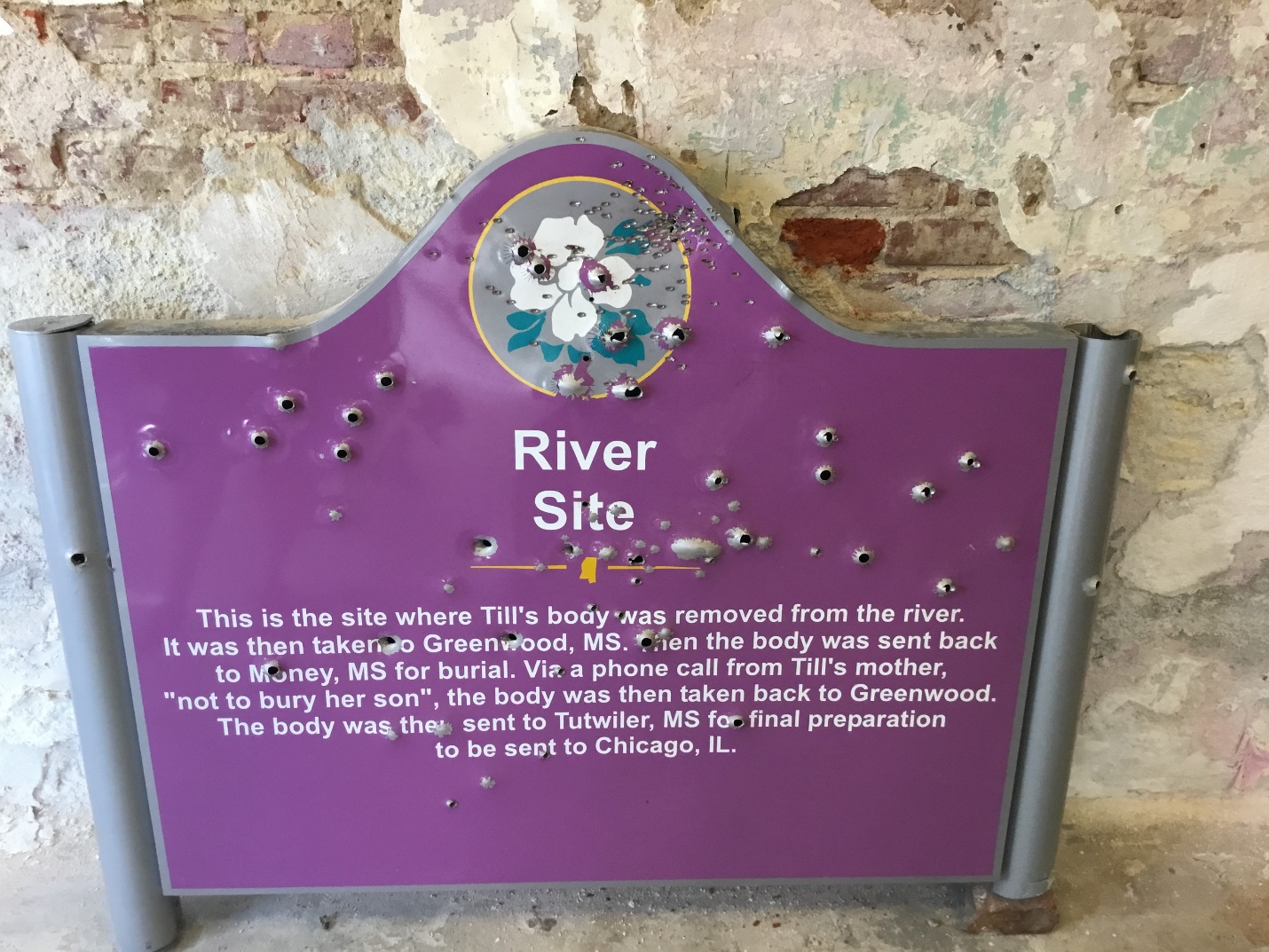Acknowledge the Past to Save the Future
ENTRY 4/8 to 4/9 – Wiggins, MS to Moss Point, MS to Gulf Shores, AL
We started 4/8 decked out in raingear again, and it was a good thing, as the rain did fall. Bobby drove the van ahead of us, and one point, kept us at one rest stop a little longer than planned to allow a storm cell containing a torrent of rain to move past so we didn’t get dumped on. We rode 81 miles on rain-soaked roads, which covered our bikes and the riders behind us in road splatter and mud. We stopped to enjoy a picnic lunch at the Sandhill Crane National Wildlife Refuge in Gautier, MS, which was a lush, quiet area with trees and bogs. I was disappointed to not see any cranes, but the peaceful stop was worth our time. When we checked into the hotel at Moss Point, I received the most wonderful surprise! My boys had made cookies and sent them with an Easter card, personalized with loving messages. It completely made my day and I ate 4 of the 6 cookies before I knew what I was doing.
On 4/9, we woke up “smelling the barn”—a rest day in Gulf Shores awaited us once we completed the 73-mile route. It was a fun day with some unique stops. In the first 42 miles, we crossed the Alabama state line, cycled over the intercoastal waterway and bridge to Dauphin Island, and then walked our bikes onto a ferry that took us to the Gulf Shore side. We cycled down the road from the ferry station and stopped to enjoy gumbo, po boy sandwiches, hush puppies, and more at Tacky Jack’s, a waterfront restaurant at Orange Beach. The remaining 21 miles was flat and easy to complete. All day the weather was uncomfortably cool (50s) and the winds were high and swirly. We arrived in Gulf Shores around 3:00 pm for hot showers, dinner, and a day of rest on 4/10.
ENTRY 4/6 to 4/7 – St. Francisville, LA to Franklinton, LA to Wiggins, MS
To this point, we haven’t had to worry about rain, but on the afternoon of 4/6, the weather fronts that have been terrorizing the rest of the country finally caught up with us. From morning until just after lunch, the skies were overcast but with no precipitation. However, after lunch, the skies opened up and a couple of hours of intermittent rain got all of us pretty wet. At dinner that night, Dennis warned us that we might be facing rain for most of the next day and to be prepared.
On 4/7, the oppressive gray of the morning placed its hands on our shoulders and pushed down hard, making all of us sluggish and not really wanting to ride. A 30% - 70% chance of rain was forecast over the entire route from Franklinton to Wiggins. Due to hotel unavailability in Franklinton the night before, we had to mount our bikes and board the van for a ride to Amite, LA, which was 24-miles out of our way. To begin the ride this morning, Dennis and Bobby drove us back to Franklinton to start where we left off the afternoon before. Everyone was fully decked in rain gear from helmet covers all the way down to shoe covers. I overdressed and was very sweaty and uncomfortable for the first couple of hours, then began to shed the layers once we crossed the state line into Mississippi. We lucked out, and over the lightly rolling 84-mile course, we didn’t run into any rain.
“We must all acquire knowledge that is informed by an honest examination of our past.” – Bryan Stevenson, Founder of The Legacy Museum and National Memorial for Peace and Justice in Montgomery, Ala.
I wanted to look at the evidence, talk to the witnesses and emotionally absorb the consequences of slavery, segregation and the civil rights battles that continue to rob black, brown and white people of health, money, peace and civility in our country. So I joined a tour bus through the trail of civil rights heroics, atrocities, shame and pride. I visited the Lorraine Motel in Memphis where Martin Luther King Jr. was murdered; saw the blood of Medgar Evers, a social justice activist, still on the driveway of his home where he was assassinated for registering voters; and felt shock and pain taking pictures of the bullet-riddled sign marking the place where Emmett Till’s mutilated body was found … the sign, shot up again last month, in 2018.
The Civil Rights Learning Journey, sponsored by the Washington Regional Association of Grantmakers (WRAG) and Leadership Greater Washington, was the culmination of a series of talks and discussions; “Putting Racism on the Table,” among philanthropists, foundation executives and civic leaders. The considerate and thoughtful people on the trip enhanced my experience. They were authentic and articulate about their feelings. And yes, there were tears.
People working to ameliorate poverty, health and education disparities decided that the root causes of pernicious racial problems had to be acknowledged and understood before enduring and sustainable change could be made. The staff and boards of many nonprofit, health and education organizations search for a silver bullet to solve issues while remaining oblivious to the depth of racism in our own institutions, laws and society. The awareness and understanding of the role played by racism is essential for programs and services aimed at helping children, families and individuals reach their potential.

Our group at the 16th Street Baptist Church in Birmingham, Ala., where 22 people were injured in a bombing by the Ku Klux Klan, including four little girls who died.

Medgar Evers’ blood stains remain on the carport of his house in Jackson, Miss.

The bullet holes in the sign marking the Sumner, Miss. site where Emmett Till’s tortured and mutilated body was found were made in Sept. 2018.
- Jatrice Martel Gaiter will be posting a series of photos and blogs about her Civil Rights Learning Journey.
